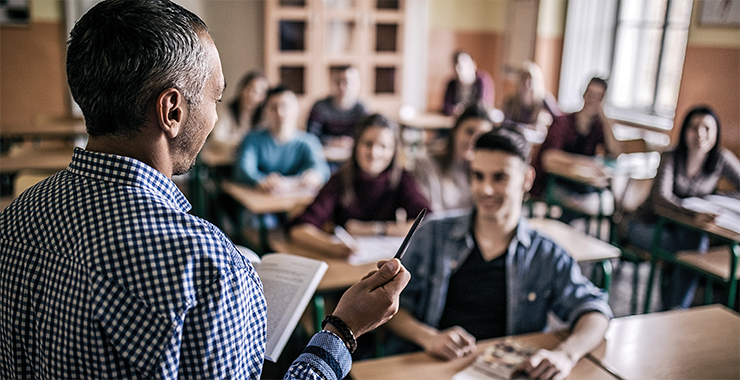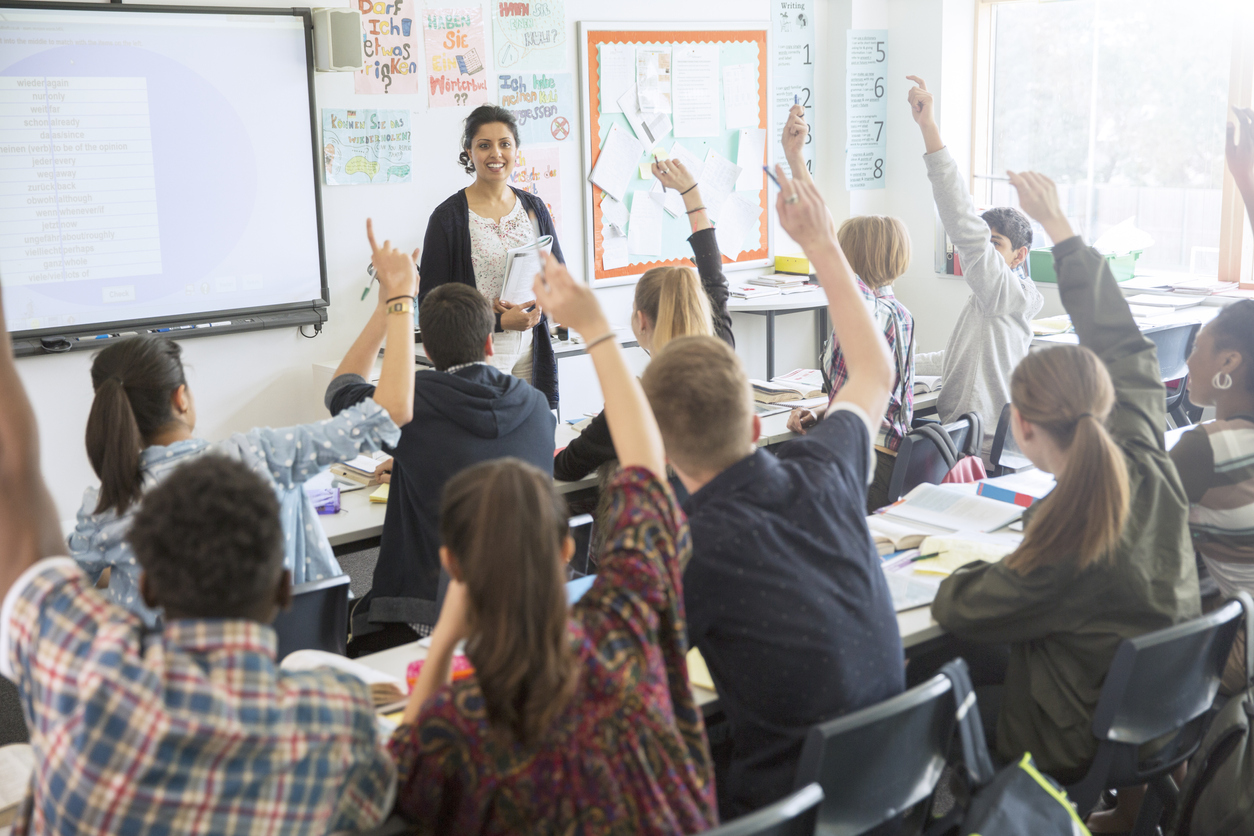Primary Science Tuition Singapore for Building Confidence in Science
Primary Science Tuition Singapore for Building Confidence in Science
Blog Article
Discovering the Various Teaching Techniques in Main Science Education Today
The landscape of primary scientific research education is progressing, with different teaching techniques getting importance in contemporary class. Inquiry-based knowing, hands-on experiments, and the integration of technology are redefining just how educators engage young minds. Additionally, joint approaches and separated instruction are being used to deal with the diverse requirements of pupils, boosting both interaction and understanding. As we examine these techniques, inquiries emerge regarding their effectiveness and the implications for future educational practices. What might these changes in method mean for the following generation of learners?
Inquiry-Based Knowing
Inquiry-Based Knowing (IBL) is an instructional method that urges pupils to discover clinical concepts with doubting, investigation, and hands-on testing. This technique emphasizes the function of pupils as active participants in their learning, promoting critical reasoning and analytic skills. By engaging with real-world inquiries, pupils become inspired and curious, which boosts their understanding of scientific principles.
In IBL, instructors work as facilitators, assisting students as they navigate their inquiries rather than supplying information directly. This student-centered approach permits distinction, accommodating various learning speeds and styles. Trainees create abilities in creating theories, making experiments, and assessing information, which are essential for scientific literacy.
Additionally, IBL fosters cooperation amongst students, motivating them to share searchings for and ideas. This collective query promotes social skills and a feeling of area within the class. The procedure of query motivates durability, as students discover to welcome failure as a stepping stone towards understanding.
Hands-On Experiments
Hands-on experiments are an essential part of efficient science education and learning, complementing the concepts of inquiry-based learning. These experiments permit trainees to involve directly with clinical ideas, fostering a deeper understanding via experiential understanding. By adjusting materials and observing end results, young learners can grasp abstract concepts in concrete means.
Such activities advertise critical thinking and analytic skills, as trainees hypothesize outcomes, conduct experiments, and evaluate outcomes. This procedure encourages them to ask inquiries, refine their understanding, and establish a clinical attitude. Moreover, hands-on experiments can be customized to diverse knowing styles, making certain that all students have the chance to engage meaningfully with the web content.
Furthermore, hands-on experiments frequently motivate partnership amongst peers, advertising teamwork and communication skills. Operating in groups makes it possible for students to share ideas, talk about findings, and discover from each other, which enhances their overall educational experience.
Integrating hands-on experiments right into the primary scientific research curriculum not only enriches the learning environment but also grows a lifelong rate of interest in science. By proactively taking part in their education and learning, students are more probable to create an interest for clinical questions that extends past the class.

Innovation Combination
Integrating innovation right into key scientific research education and learning has actually come to be increasingly vital in promoting trainee interaction and improving finding out results. The use of digital tools, such as interactive simulations, virtual labs, and instructional software program, supplies trainees with chances to check out clinical concepts in cutting-edge means. These sources assist in a deeper understanding of intricate subjects by enabling students to envision and adjust variables that would certainly be unwise in a standard classroom setting.
Additionally, modern technology combination encourages customized discovering experiences. Pupils can advance at their own rate, taking another look at tough concepts via multimedia resources, which satisfy various understanding styles. This adaptability not only sustains individual development but also grows a sense of freedom in students.
Furthermore, technology functions as a bridge to real-world science, attaching students with existing research study and professional payments. Accessibility to clinical journals and on the internet data sources widens students' perspectives on scientific query and cultivates essential thinking skills.
Collaborative Learning
Collective discovering plays an essential duty in primary scientific research education by promoting team effort and communication skills among pupils. This method encourages learners to collaborate, share expertise, and take part in problem-solving, which enhances their understanding of scientific ideas. By joining team tasks, students learn to articulate their concepts, listen to varied perspectives, and work out services, every one of which are vital abilities in both scholastic and real-world contexts.

Research study indicates that collective learning can cause boosted motivation and interaction in scientific research subjects, as trainees find satisfaction in shared experiences (primary science tuition Singapore). Additionally, this approach prepares trainees for future collective endeavors, furnishing them with the abilities necessary for efficient teamwork in college and professional environments. Ultimately, embracing collective understanding in primary science education can substantially enrich the knowing experience and promote a deeper understanding of scientific questions
Separated Direction

Differentiated direction can materialize in various ways, such as varying the content, processes, or items of understanding. As an Your Domain Name example, educators might utilize tiered tasks that offer varying degrees of intricacy, enabling pupils to operate at their corresponding readiness levels. Additionally, adaptable grouping strategies can promote collaboration among pupils with various capacities, fostering peer knowing.
Assessment plays a vital role in this technique, as it informs guideline and assists educators recognize each student's one-of-a-kind requirements. Formative assessments, such as tests and observations, can assist instructors in adjusting their methods to enhance discovering end results. primary science tuition Singapore. Eventually, by carrying out differentiated direction in key science education and learning, educators can cultivate an extra efficient and fair knowing atmosphere, equipping all trainees to reach their complete possibility in recognizing clinical phenomena
Final Thought
In recap, the varied teaching techniques in main science education, including inquiry-based understanding, hands-on experiments, modern technology integration, collaborative learning, and set apart direction, collectively add to a more effective discovering atmosphere. These methods promote essential thinking, analytical skills, and a much deeper understanding of scientific principles. By applying these strategies, educators can create supportive and engaging class that resolve the diverse demands of trainees, eventually promoting a lifelong interest YOURURL.com in science and improving scholastic success.
Inquiry-Based Knowing (IBL) is a pedagogical method that urges students to discover clinical ideas through doubting, investigation, and hands-on experimentation.Collaborative understanding plays a crucial function in key science education and learning by cultivating team effort and communication skills among pupils.Research study indicates that joint knowing can lead to enhanced inspiration and interaction in science topics, as students discover enjoyment in common experiences.In fostering a comprehensive discovering environment, separated direction arises as an essential strategy to fit the varied requirements and abilities of trainees in key science education and learning. Ultimately, by applying distinguished guideline in main science education and learning, instructors can cultivate a much more efficient and fair knowing setting, encouraging all students to reach their full potential in recognizing clinical phenomena.
Report this page